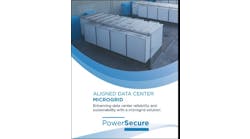Vic Shao, Green Charge Networks
In his State of Union speech President Obama called for a year of action. In particular he urged for a “shift to a cleaner energy economy.” The chances that President Obama will be able to legislate major strides towards more clean energy in our current gridlocked Congress are slim. But 2014 might just be the year when we move towards a less energy intensive economy through smart energy storage.
As Katie Fehrenbacher of Gigaom recently pointed out, the power grid is looking more and more like the Internet with distributed computing and smart systems. The biggest challenge in America’s grid today is that utilities are required to build enough capacity to meet the highest level of demand. But, through new predictive software, we can reduce peak demand and save a lot of energy and money along the way.
Energy efficiency has captured national attention for the past decade, and rightly so. But much of the low-hanging fruit is gone – light bulbs have been changed, homes have been weatherized and smart thermostats have become so hip that Google paid $3.2 billion for thermostat-maker Nest. The next frontier is to use technology to improve the way our overall grid functions, an idea I like to call power efficiency.
A software engineer by training, I’ve always been fascinated by the prospect that we can use technology as a substitute for more hardware. The challenge is to apply technology to the biggest machine in the world, our electric grid.
Our grid started in 1882 as a small power station in New York that provided power to 400 lamps. After the Great Depression, big government projects brought power to the masses and regulation to utility companies, creating the grid we have today. Our grid was the greatest engineering feat of the 20th century but it can’t keep up with 21st century demands.
In the 21st century we need to move towards a more decentralized system with smart technologies to use power efficiently and enable the addition of more clean, distributed power. We’re beginning to get there.
California led the way by passing the first statewide energy storage directive in the country last fall. Governor Cuomo has begun championing energy storage in New York. Just last month the U.S. Department of Energy released a Grid Energy Storage report outlining the challenges and opportunities in the energy storage marketplace.
Our union might be in a state of political stagnation but the state of energy storage holds great promise for our country.
About Vic Shao
Vic is Chief Executive Officer of Green Charge Networks, an intelligent energy storage company based in Silicon Valley. Since 2009, Vic led the company through its US $12 million smart grid project with Con Edison of New York, the US Department of Energy and Fortune 500 companies on a ROI-driven energy storage GreenStation with software intelligence to empower commercial and industrial customers to save on their energy bills. With more than 15 years experience in software development and complex system implementation, Vic is passionate in applying software to improve power efficiency.







